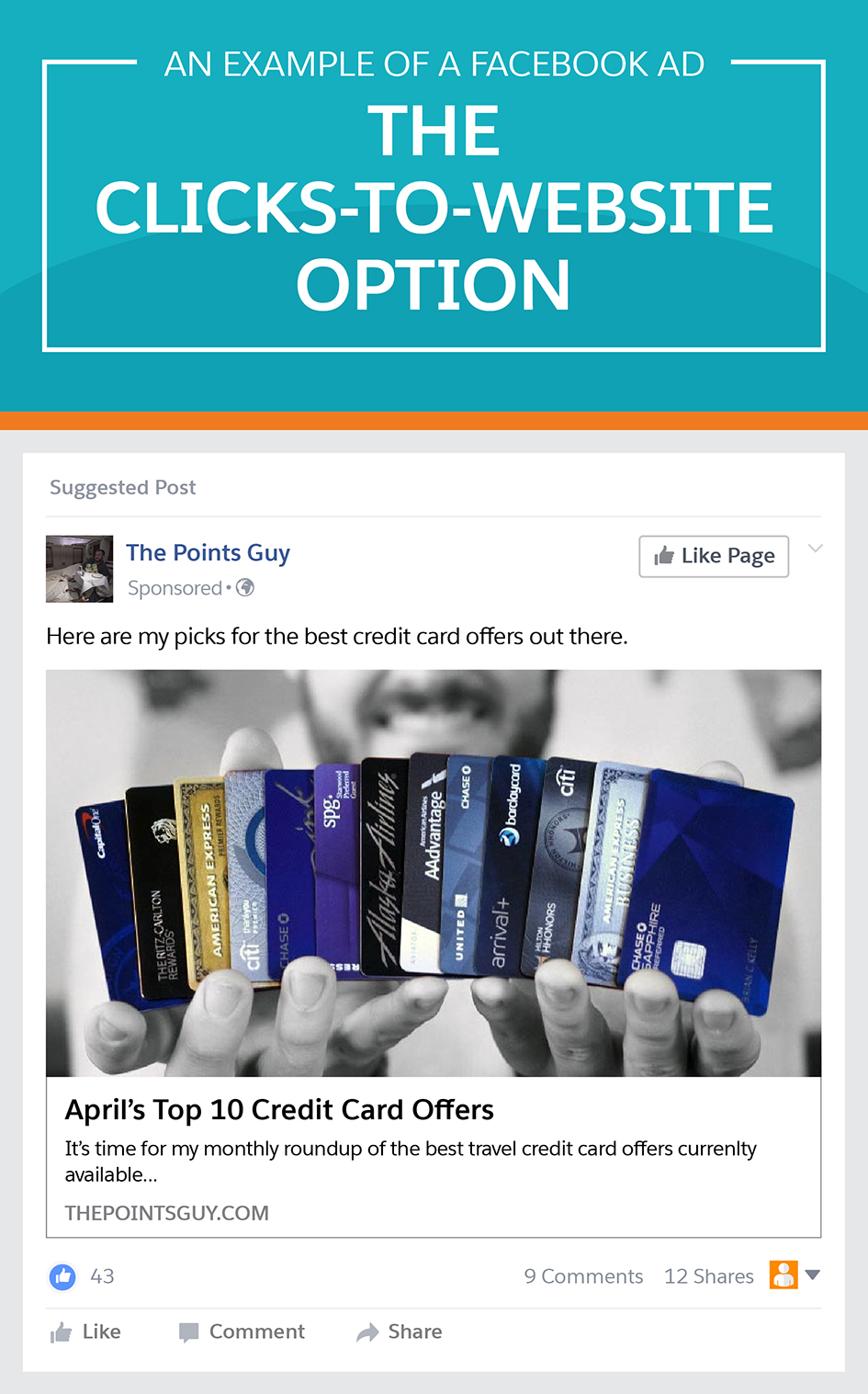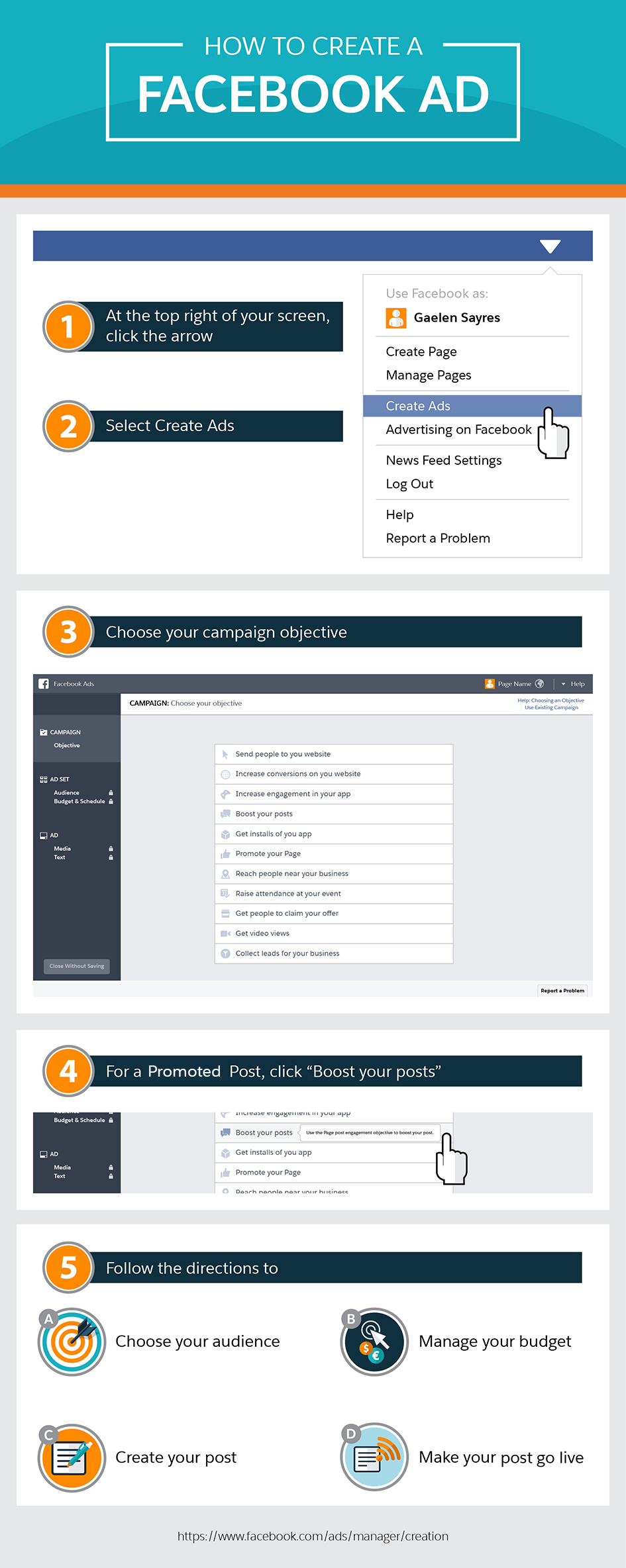Creating a promoted post on Facebook is easy enough, but making sure it reaches the right audience and is worth the investment takes a little bit more effort. With a number of options available to help you connect with your customers, an informed approach can make all the difference.Check out the tips below to make sure you don’t miss something that could have made your Facebook sponsored post more successful.
Advertising on Facebook: The Run Down
Facebook Ads are the primary way Facebook gets its revenue. These ads, which come in a variety of formats, allow companies to put specific, targeted, and uniquely actionable ads in the News Feeds of their target audience. Below you can see an example from The New York Times, which has taken advantage of the Promoted post feature for advertising.
The Many Faces of Facebook Ads
- When you run a Facebook Ad, you have a few different options
- Page Post Engagement
- Page Like
- Clicks to Website
- Website Conversions
- App Install and Engagement
- Event Response
- Offer Claim
- Video Views
- Local Awareness
- The Carousel Format
- Dynamic Product
- Slideshow
- Lead
- Canvas
- One of the most popular options is the Page Post Engagement Ad
- Promote a specific post
- It will appear in your chosen audience’s News Feed

These posts give Facebook users the opportunity to Like a business page right away, as well as see the post before becoming a fan and interacting with it. This is a great way to acquire new followers because once people subscribe to your main Facebook page, they will see your articles and updates in their feed.
As a comparison, in another Facebook Ad, The Points Guy, a blogger who educates readers on how to travel using frequent flyer miles and credit card rewards, uses the Clicks to Website ad option. This type of ad (shown below) gives three chances on a post for people to interact: Like Page, the actual article headline that takes you to his website, and a Learn More button that takes you to the Contact Page. They can, of course, also comment, like, and share.

Facebook Ads work as native advertisements, meaning they flow with the format and style of the website. The ad isn’t intrusive, which gives it a higher likelihood that people will engage.
Step One: Define your audience
The next steps will talk about how to create the first type of Facebook Ad: Page Post Engagement, also known as boosting a post. As with any advertisement, the main reason for creating a promoted Facebook post is to help you reach your target audience, and then have these users follow your call to action. Through Facebook, you can narrow down your audience by the usual demographics: age, sex, location, and more.
Look at Facebook Insights to determine who is currently interacting with your page. This doesn’t necessarily mean you have to stick with this audience , especially if you’re hoping to change direction and reach a different demographic. Insights can help give you perspective to inform your decisions..
One thing that makes Facebook advertising unique is that it allows you to add specific filters to your demographics, such as hobbies or interests. While Google may be able to infer this information from different searches and channels, many Facebook users tell the platform directly what they enjoy, offering greater insight and consumer data that other resources may not have.
Facebook Ad Audience Selection
- Choose basic demographics
- Locations
- Age
- Gender
- Languages
- More advanced demographics, like if they own a home, are also options
- Interests
- Get specific with Behaviors—for example:
- Who might be in the market to buy a car
- People who use Facebook on a smartphone or tablet
- Connections
- People who like your Page
- The friends of people who like your Page
- People interested in things related to what you’re offering.

By using the Precise Interests and Broad Categories segmentation options, Facebook can calculate how large your audience actually is, which you can see while you work in the Choose Your Audience screen. This will give you a much better idea of how many people you can reach. With this number in mind, it’s up to you to decide how important each interest or hobby is. For some, the interest or hobby holds more weight than the number of people the ad will reach. For others, a wider reach is more important. It completely depends on your business, but the standard advice holds true: Know your audience!
A Word of Caution
From here, the number of people who will see your ad really depends on your budget. This is a potentially negative aspect of Facebook promoted posts for companies with less money to spend: The larger your budget, the more people that will actually see your post. However, Facebook ads are pretty budget friendly to start out. The challenge is that there is no guarantee that people will click on your ad. This makes targeting the right audience even more critical.
Step Two: Create your Promoted Post
Once again, one of the perks of promoted posts—as opposed to the ads that appear in the side column—is that they are highly visible to your audience. Take this opportunity to make the best ad that you can, and bear in mind who your target audience is. To get started, follow these tips:
Prepare your ad text and images in advance.
Before you launch into designing the post, think about what it can contain; in other words, consider the elements of sponsored Facebook posts. Social Media Examiner, a publisher that helps companies understand how to use social media, explains all of the elements a post can have:
Above the Fold (five to six lines before the Read More button)
- Your main offer
- The solution
- (Optional) Your phone number
Below the Fold
- Additional information
- Call to action
I highly recommend starting here as opposed to going straight into creating your ad. This will help you visualize the post and really think about what you want to say, as well as the features Facebook gives you to say it.
Choose the right images.
Pick images that are 600 x 315 pixels for the best visibility. Be aware that Facebook has a requirement that you can only have 20 per cent text on your image. This helps make the sponsored posts more visually appealing and fit seamlessly into the rest of the user’s News Feed. Plus, it will be far more likely to grab their attention.
Step Three: Put your ad out for the world to see
Your next step is to publish your ad. This part is pretty straightforward; just remember that if you want to be successful, you should follow the advice above. In other words, it’s not really about how you publish: It’s about what you publish. Below are the steps you want to take to make your ad go live:
1. At the top right of your screen, click the arrow.
2. Select Create Ads.
3. Choose your Campaign Objective.
4. For a Sponsored Post, click “Boost your posts.”
5. Follow the directions to:
- Choose your audience
- Manage your budget
- Create your post
- Make your Sponsored Post go live
How to Create a Facebook Ad
- At the top right of your screen, click the arrow
- Select Create Ads
- Choose your Campaign Objective
- For a Sponsored Post, click “Boost your posts”
- Follow the directions to
- Choose your audience
- Manage your budget
- Create your post
- Make your Sponsored Post go live

At this point you have launched your campaign. Keep up with Insights to see how your sponsored post is doing: Monitor how many clicks it drove to your website, how many people “liked” your page after seeing the post, and other important metrics. If you use a CRM like Salesforce, you can to take the Facebook leads you earn through sponsored posts and send them straight to your CRM.
For more detailed steps to take after the Promoted Post is live, including labeling your campaigns and other detailed options, click here.
The Takeaway
Sponsored posts attract attention from users when you properly segment your audience and really know your target demographic. These links have been proven successful and do in fact work when you have investigated and fully understand who your audience is. This aspect is critical to get users to click on your link or like your page to see what more you have to offer.
Happy posting!
Share "How to Create a Successful Ad on Facebook " On Your Site




